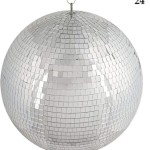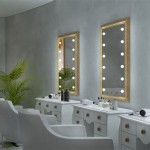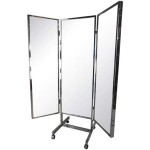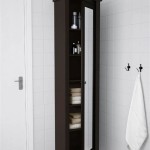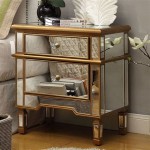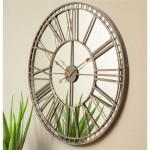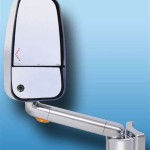The Enduring Appeal of Old Fashioned Mirrors
Old fashioned mirrors, distinct from their modern counterparts, evoke a sense of history, craftsmanship, and timeless elegance. They are more than reflective surfaces; they are decorative objects that add character and depth to interior spaces. Their appeal lies in the unique combination of materials, techniques, and styles that reflect different periods and artistic movements. Understanding the nuances of old fashioned mirrors helps one to appreciate their value and incorporate them effectively into various design schemes.
The definition of "old fashioned" in the context of mirrors is relatively broad, encompassing mirrors produced from the 17th century through the mid-20th century. This period saw significant advancements in glassmaking, silvering techniques, and frame design, resulting in a diverse array of mirror styles. These mirrors are often characterized by their ornate frames, distressed glass, and the visible signs of age, which contribute to their distinctive charm.
Furthermore, the process of creating an old fashioned mirror involved meticulous handcraftsmanship. Artisans skillfully carved intricate details into wooden frames, applied delicate gilding, and carefully silvered the glass using methods that differed significantly from modern industrial processes. This dedication to detail is evident in the finished product, making each old fashioned mirror a unique work of art.
Key Characteristics of Old Fashioned Mirror Glass
Mirror glass from earlier periods differs significantly from modern float glass. Older glassmaking techniques often resulted in imperfections, such as bubbles, waves, and variations in thickness. These imperfections, while considered flaws in modern glass, are often prized in old fashioned mirrors, as they contribute to the mirror's antique character and visual interest. The subtle distortions and irregularities create a soft, diffused reflection, distinct from the perfectly clear and sharp reflections produced by contemporary mirrors. This characteristic can be particularly desirable in spaces where a more subdued and atmospheric ambiance is preferred.
The silvering process used in old fashioned mirrors also contributes to their unique appearance. Before the development of modern chemical silvering methods, mirrors were typically silvered using a combination of tin and mercury. This process, while effective, often resulted in a softer, more muted reflection compared to the bright, highly reflective surfaces of modern mirrors. Over time, the silvering layer can also degrade, creating foxing – a speckled or mottled appearance caused by oxidation. This foxing, while detrimental to the mirror's reflective properties, is often considered a desirable feature, adding to its antique patina. The type and extent of foxing can also significantly impact the mirror’s value and its suitability for different design applications.
The glass itself, if original to the timeframe intended, can be a key indicator of authenticity. Examining the edges of the glass can reveal clues about its age. Hand-cut glass, common in older mirrors, will often have a slightly rougher texture than machine-cut glass. The thickness of the glass can also be a factor; older glass tends to be thicker and less uniform than modern glass. Careful observation of these details can help distinguish a genuine old fashioned mirror from a reproduction or a more recent creation.
Materials and Styles of Frames in Old Fashioned Mirrors
The frame is an integral component of an old fashioned mirror, often dictating its style and historical period. Frames were constructed from a variety of materials, including wood, metal, and gesso (a plaster-like material). Wood frames were frequently carved with elaborate designs, reflecting the prevailing artistic styles of the time. Common wood types included mahogany, walnut, oak, and pine, each offering distinct visual and structural properties. Gilding, a process of applying thin layers of gold leaf to the frame, was a popular technique for enhancing the frame's decorative appeal and signifying wealth or status.
The style of the frame can indicate the mirror's provenance and age. For example, mirrors from the Baroque period often feature heavily ornamented frames with scrolling acanthus leaves, cherubs, and other classical motifs. Rococo mirrors are characterized by their asymmetrical designs, delicate curves, and ornate details, often incorporating floral elements and shell motifs. Neoclassical mirrors exhibit a more restrained aesthetic, with symmetrical designs, straight lines, and classical motifs such as urns, swags, and laurel wreaths. Victorian mirrors are known for their elaborate carvings, dark wood finishes, and opulent details.
The condition and preservation of the frame significantly impact the mirror's overall value and aesthetic appeal. Damage to the frame, such as cracks, chips, or missing decorative elements, can detract from its value. However, a certain amount of wear and tear can also contribute to the mirror's antique character. When considering an old fashioned mirror, it is essential to carefully assess the condition of the frame and determine whether any restoration or repair work is necessary. The appropriate restoration techniques should be employed to preserve the frame's original character and integrity. Additionally, reproduction frames are available, allowing for historical accuracy in mirror restoration or replicating period styles.
Incorporating Old Fashioned Mirrors into Interior Design
Old fashioned mirrors can be seamlessly integrated into a variety of interior design styles, adding a touch of elegance, character, and historical significance. Their versatility allows them to complement both traditional and contemporary spaces, creating focal points and enhancing the overall ambiance. The careful placement and selection of old fashioned mirrors can transform a room, adding depth, light, and a sense of history.
In traditional interiors, old fashioned mirrors can be used to reinforce the existing aesthetic. A large, ornate mirror can be hung above a fireplace mantel, creating a striking focal point and reflecting the warm glow of the fire. Smaller mirrors can be grouped together on a wall to create a gallery effect, adding visual interest and reflecting light throughout the room. The choice of frame style should complement the existing furniture and décor, ensuring a cohesive and harmonious design.
In contemporary spaces, old fashioned mirrors can provide a striking contrast to the clean lines and minimalist aesthetic. An antique mirror can be hung in a hallway, adding a touch of history and character to a modern space. A distressed mirror can be placed in a bathroom, creating a unique and unexpected focal point. The key is to select a mirror that complements the existing color palette and design elements, creating a balanced and visually appealing composition. The contrast between the old and new can create a compelling visual tension, adding depth and interest to the space and serving as a conversation piece.
The size and placement of an old fashioned mirror are crucial considerations. A large mirror can make a small room appear larger and brighter, while a smaller mirror can be used to highlight a specific feature. Mirrors should be placed strategically to reflect natural light, maximizing its effect and creating a more inviting atmosphere. The angle of reflection should also be carefully considered to avoid unwanted glare or reflections. Furthermore, consider the function of the mirror when determining its placement. A mirror intended for dressing or grooming should be placed at an appropriate height and angle to provide a clear reflection. A purely decorative mirror can be placed according to aesthetic considerations, such as creating a focal point or balancing the composition of a room. Proper placement ensures that the mirror serves its intended purpose while enhancing the overall design of the space.

Antique Mirrors A Guide To Identifying Collecting

Antique Mirrors A Guide To Identifying Collecting

Antique Gold Leaf Mirrors Oagain Décor

Buy Baroque Mirror Vintage Style Oval In

Antique Mirrors A Guide To Identifying Collecting

The Ultimate Guide On Diy Antique Mirrors So Much Better With Age

Antique Mirrors In A Bathroom Adding Charm Character
These Antique Style Mirrors Add Old World Charm For A Fraction Of The

Antique Mirrors In A Bathroom Adding Charm Character

Common Types And Styles Of Antique Mirrors Lovetoknow
